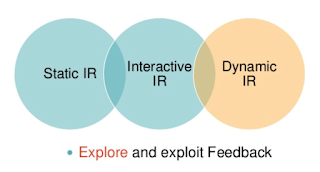[Talk Summary 13] Concept Map Extraction from Textbooks
Shuting Wang, 5th year PhD student, from Computer Science department, Penn State University had the talk "Concept Map Extraction from Textbooks" on Dec 05, 2016. In the talk, she presented three parts of her work: extracting concept hierarchy from textbook, using prerequisite to extract concept maps from textbook, and using the concept maps for automatic assessment. First of all, Shuting talked about how to extract concept hierarchy from textbook. In her work, she extracted important concepts in each book chapter using Wikipedia as a resource and then construct a concept hierarchy for that book. She presented the process to construct a concept hierarchy as follows: Build a concept dictionary from Wikipedia entities related to the topic of the book. Select concept candidates in the concept dictionary based on title and content similarity between a section (subchapter) in the book and Wikipedia articles. Construct the concept hierarchy from the table of content order of t...
